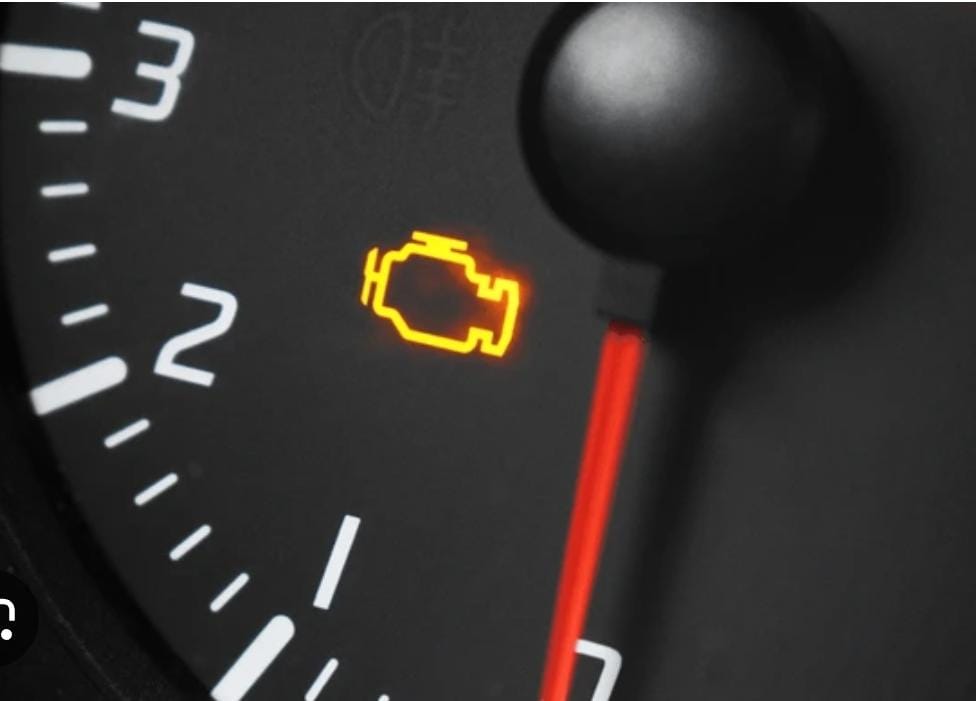
Your car’s check engine light just turned on? Don’t panic! Discover what it really means, the top reasons behind it, and how to fix it before it becomes a costly repair.
🚗 Introduction: That Mysterious Glow on Your Dashboard
You’re cruising smoothly down the highway when suddenly a tiny orange light pops up on your car dashboard warning lights — the dreaded Check Engine Light (CEL). It’s one of the most common issues car owners face, yet it’s often misunderstood or ignored until it’s too late.
In this blog, we break down what this light actually means, why it turns on, and what you should do right now to avoid a breakdown or a hefty repair bill.
🔍 What is the Check Engine Light?
Table of Contents
The check engine light is part of your vehicle’s onboard diagnostics system (OBD-II). When your car’s computer detects a problem it can’t self-correct, it illuminates this light. There are so many type of car dashboard warning lights :-
Depending on the severity, the light may:
Remain steady (minor issue)
Blink continuously (major issue needing immediate attention)
Ignoring this light could lead to reduced fuel efficiency, engine damage, or even total vehicle failure.
—
⚠️ Top Reasons Why Your Check Engine Light Comes On
Let’s dive into the most common causes for that annoying glow:
1. Loose or Damaged Fuel Cap
Believe it or not, a simple loose fuel cap can trigger the CEL. The cap maintains pressure in the fuel tank; when it’s not tight, it can mess up the emissions system.
2. Faulty Oxygen Sensor
The oxygen sensor monitors fuel combustion. A bad sensor can throw off your engine’s air-fuel ratio and reduce performance.
3. Failing Catalytic Converter
Vital for reducing harmful emissions, the catalytic converter can wear out over time. It’s a costly repair but necessary to pass emissions tests.
4. Bad Spark Plugs or Wires
Old or dirty spark plugs affect engine firing, causing misfires and reduced fuel economy.
5. Mass Airflow Sensor Malfunction
This sensor measures air entering the engine. Faulty readings can confuse the engine control unit (ECU) and trigger the warning.
These issues often result in engine fault codes, which a technician can read using a scanner tool.
—
🔧 What to Do When the Light Turns On
So, what should you do when you see that light?
✅ Step 1: Don’t Panic
A steady light usually indicates a non-critical issue. If it’s blinking, pull over safely and call for assistance.
✅ Step 2: Check the Fuel Cap
Make sure it’s tightly closed. If it was loose, the light may turn off after a few drives.
✅ Step 3: Use an OBD-II Scanner
These are affordable and easy to use. Plug it into your car’s OBD port and read the engine fault codes. Apps like Torque or Car Scanner can help.
✅ Step 4: Visit a Mechanic
If the problem isn’t minor, get professional help. Continuing to drive with the light on can turn a ₹2,000 fix into a ₹20,000 nightmare.
📲 Bonus Tips to Prevent Future CEL Issues
✅ Get regular oil changes and tune-ups
✅ Replace spark plugs every 40,000–50,000 km
✅ Keep air filters clean
✅ Don’t ignore other car dashboard warning lights
Proper maintenance is the easiest way to keep the check engine light off and your vehicle healthy.
🧠 Quick FAQs
Q1: Is it safe to drive with the check engine light on?
If the light is steady, you can usually drive short distances. If it’s blinking, pull over immediately.
Q2: Will the light go off by itself?
Yes, in some cases — especially if the issue resolves (like tightening a fuel cap). Otherwise, a reset is needed.
Q3: How much does a typical repair cost?
It can range from ₹500 (loose cap) to ₹30,000+ (catalytic converter). Always diagnose before assuming the worst!
🌟 Final Thoughts: Don’t Ignore the Light, It’s Talking to You!
That small orange icon might look harmless, but it’s your car’s way of screaming for help. Whether it’s a minor sensor issue or a serious mechanical fault, taking immediate action could save you from dangerous breakdowns and massive repair bills.
Stay alert, stay informed — and let your engine breathe easy.
disclaimer
This blog is for informational purposes only. Always consult a certified auto mechanic or service center before attempting any repairs or relying on DIY solutions. Your vehicle’s safety and health should be your top priority.
regards: hudda suman